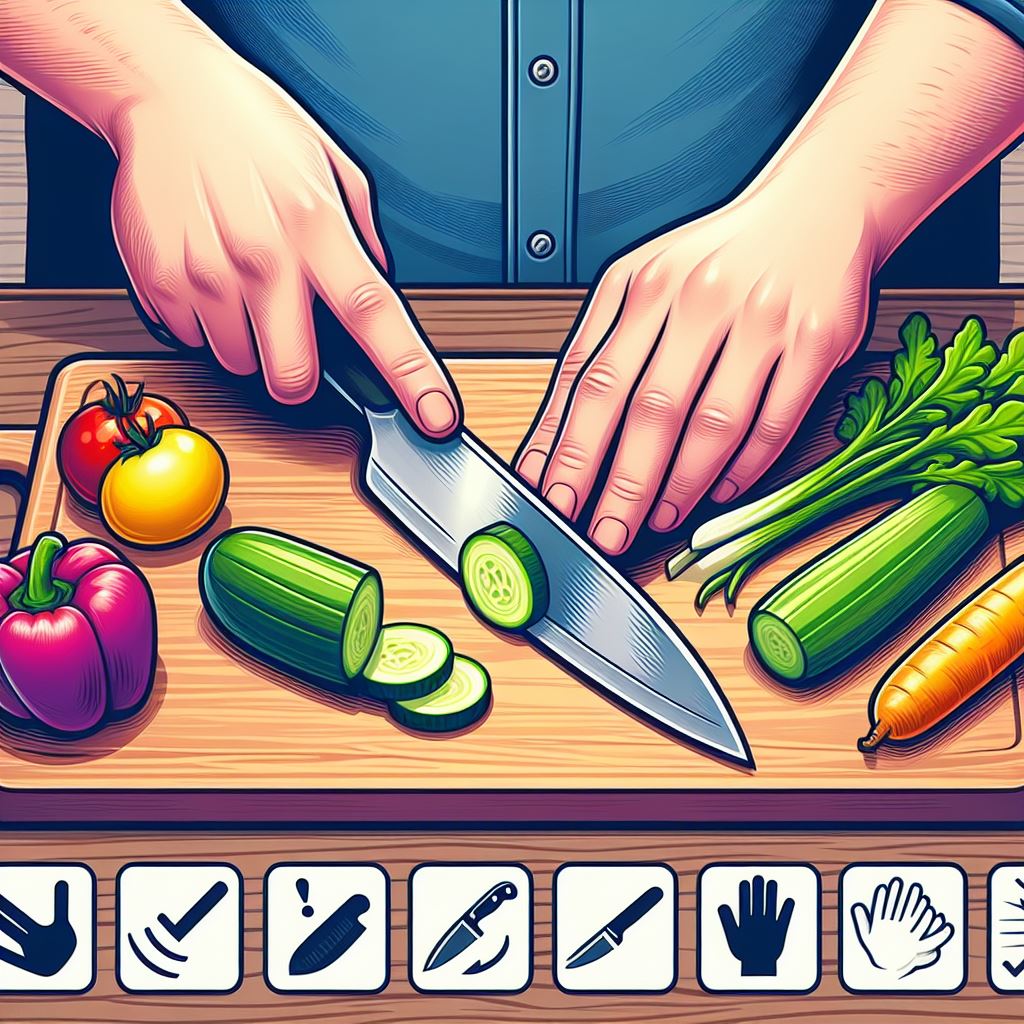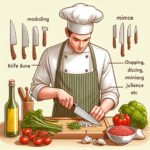To ensure kitchen knife safety, hold the knife securely, keep fingers away from the blade, and store knives in a knife block or a drawer with a knife guard. Kitchen knives should always be used on a stable surface and should never be left unattended.
Always use a cutting board and keep it clean to prevent slipping.
Choosing The Right Knife
Selecting the perfect knife for your kitchen is crucial for ensuring kitchen knife safety. Discover essential tips to choose the right knife and keep yourself safe while cooking.
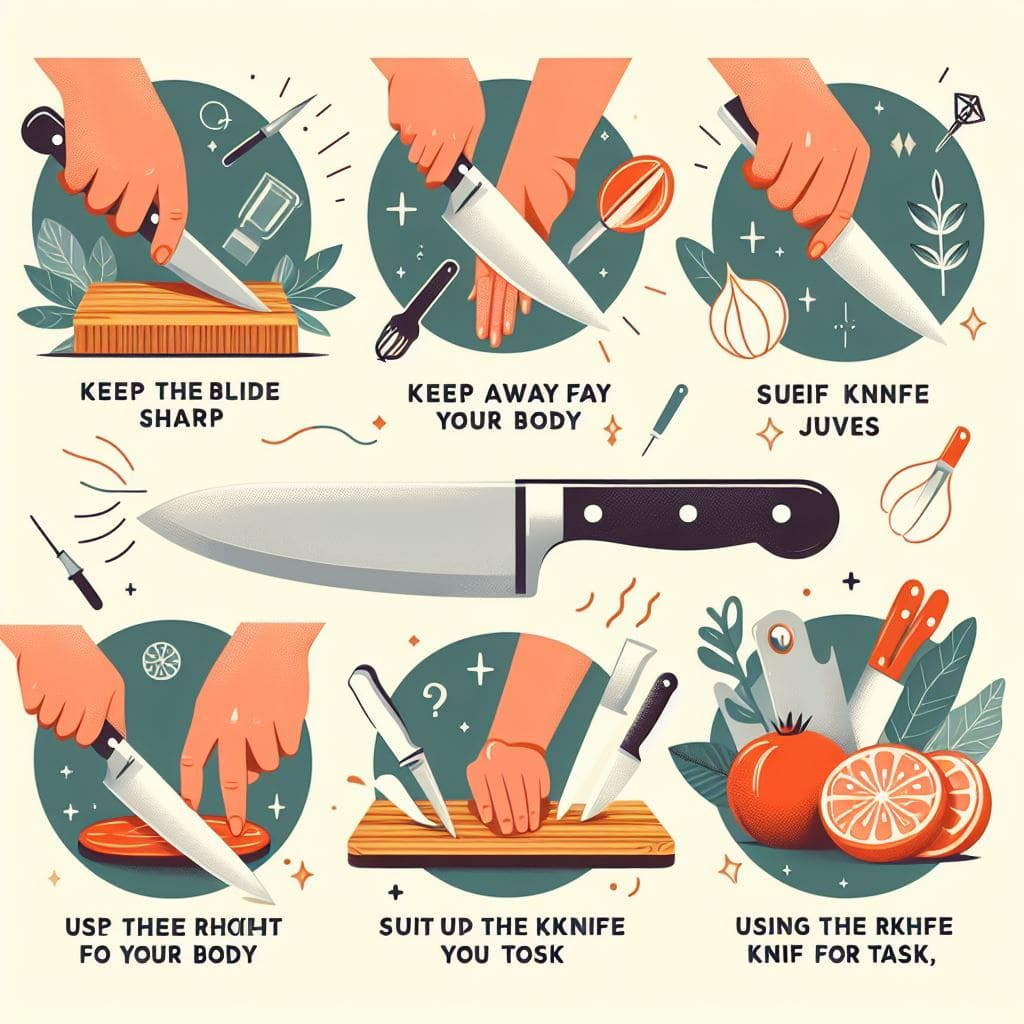
Consider The Purpose Of The Knife
When choosing the right kitchen knife, it’s essential to consider its purpose. Each knife is designed to excel in specific tasks, and understanding this will help you make the right choice for your culinary needs. Are you looking for a versatile all-purpose knife or a specialized knife for a particular task? Determining this will guide you in selecting the most suitable knife for your kitchen.
Select The Appropriate Blade Material
An important factor to consider when choosing a kitchen knife is the blade material. Different materials offer varying levels of sharpness, durability, and resistance to corrosion. The most commonly used materials for knife blades include stainless steel, carbon steel, and ceramic. Stainless steel blades are known for their corrosion resistance and are easy to maintain. Carbon steel blades, on the other hand, offer exceptional sharpness and edge retention, but require more care and maintenance. Ceramic blades are extremely sharp and retain their edge for longer, but they are brittle and can chip or break if not handled with care. Consider your preferences, cooking style, and maintenance capabilities when selecting the appropriate blade material for your knife.
Ensure Proper Handle Grip
The handle grip of a kitchen knife plays a crucial role in your safety and control while using it. A comfortable and secure grip is essential to prevent accidents and ensure precise cutting. Consider the shape, material, and texture of the knife handle. The handle should feel comfortable in your hand and provide a firm grip, even when wet or greasy. Look for handles made from materials like wood, plastic, or composite materials that offer the right balance of durability and ergonomic design. Avoid handles that are too bulky or slippery, as they can compromise your control over the knife. Take the time to hold and feel the knife in your hand before making your final decision.
Safe Handling Techniques
Properly handling kitchen knives is essential for both your safety and the effectiveness of your cutting skills. By following these safe handling techniques, you can minimize the risk of accidents while keeping your knives sharp and performing at their best.
Keep Knives Sharp
Keeping your knives sharp is not only important for efficient cutting but also for safety. When a knife is dull, you have to exert more pressure, increasing the chances of slips and accidents. By regularly honing and sharpening your knives, you ensure that they can effortlessly glide through food, reducing the risk of injuries.
Use The Correct Cutting Technique
Using the correct cutting technique is crucial to avoid injuries. Follow these guidelines for safe cutting:
- Always cut away from yourself. This technique allows you to maintain control over the knife and reduces the risk of accidentally cutting yourself.
- Position your fingers properly. Keep your fingers curled under and your thumb resting against the side of the blade to provide stability and control while cutting.
- Use a sturdy cutting board. Place a nonslip cutting board on a stable surface to prevent the knife from slipping, making it easier to maintain control.
- Avoid excessive force. Let the sharpness of the knife do the work for you. Applying too much force can lead to slips and injuries.
- Utilize a rocking motion. For repetitive chopping, use a gentle rocking motion with the knife, keeping the tip of the blade on the cutting board at all times.
Avoid Distractions
Distractions in the kitchen can be dangerous, especially when handling sharp knives. To ensure your safety, follow these tips:
- Keep your focus on the task at hand. Avoid engaging in conversations or other activities that can divert your attention from cutting safely.
- Work in a well-lit area. Proper lighting enables you to see what you are doing clearly, reducing the likelihood of accidents.
- Store distractions away. Keep electronic devices, such as smartphones, away from the cutting area to prevent distractions and potential accidents.
By practicing safe handling techniques, such as maintaining sharp knives, using proper cutting methods, and avoiding distractions, you can significantly reduce the risk of accidents while preparing meals in the kitchen.
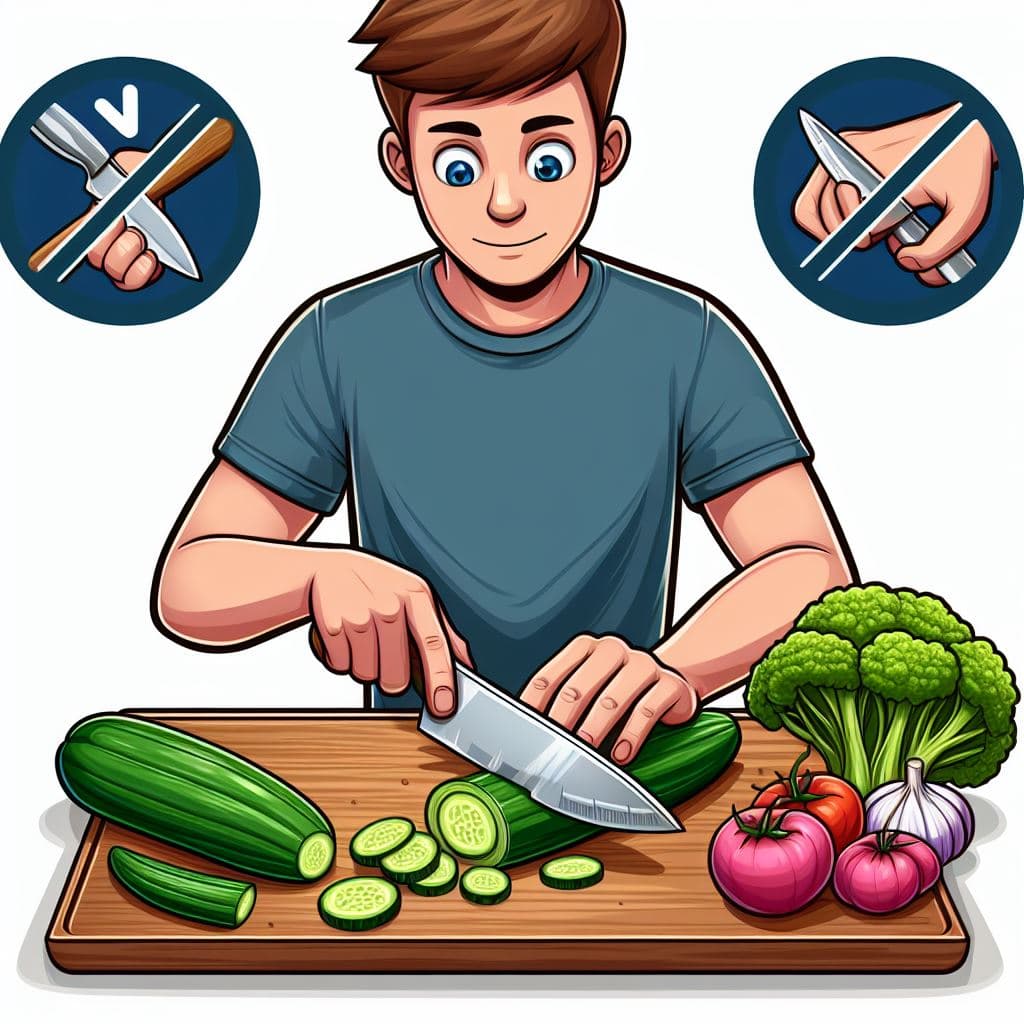
Proper Storage And Maintenance
Proper storage and maintenance of kitchen knives are essential for your safety in the kitchen. Not only will it keep your knives in top condition, but it also helps to prevent accidents. Follow these knife safety tips to ensure your knives are stored correctly and maintained properly.
Store Knives In A Safe Location
Storing your knives in a safe location reduces the risk of accidents and keeps them in good condition. Here are a few pointers on how to store your knives:
- Use a knife block or magnetic strip: Storing knives in a designated knife block or with the help of a magnetic strip keeps them easily accessible while protecting the blade.
- Avoid storing knives loosely in drawers: Storing knives loosely in drawers increases the chance of accidents and can damage the blades. Consider using knife guards or blade covers if you must store them in a drawer.
- Keep knives away from children’s reach: Ensure that your knives are stored out of reach of children.
Clean And Dry Knives Properly
Proper cleaning and drying of knives are crucial for both hygiene and maintenance. Follow these steps to effectively clean and dry your kitchen knives:
- Hand wash your knives: Avoid placing your knives in the dishwasher as the harsh detergents and high heat can damage the blades. Instead, hand wash them with warm soapy water.
- Use a soft sponge or cloth: Scrub the blade with a soft sponge or cloth to remove any food residue. Avoid using abrasive materials that can scratch the blade.
- Dry the knives immediately: After washing, thoroughly dry the knives to prevent moisture from causing rust. Use a clean towel or air-dry them.
Regularly Inspect For Wear And Tear
Regularly inspecting your knives for wear and tear is crucial for both your safety and the longevity of the blades. Here’s what you need to do:
- Check for loose handles: Ensure the handle is securely attached to the blade. If you notice any looseness, it’s important to get it repaired or replace the knife.
- Inspect the blade for chips or cracks: Carefully examine the blade for any chips, cracks, or signs of damage. Damaged blades should be sharpened or replaced as necessary.
- Sharpen the blades when needed: Dull knives are more likely to slip, increasing the risk of accidents. Regularly sharpen your blades using a sharpening stone or take them to a professional knife sharpener.
By following these tips for proper storage and maintenance, you can ensure that your kitchen knives stay in excellent condition and reduce the risk of accidents while working in the kitchen.
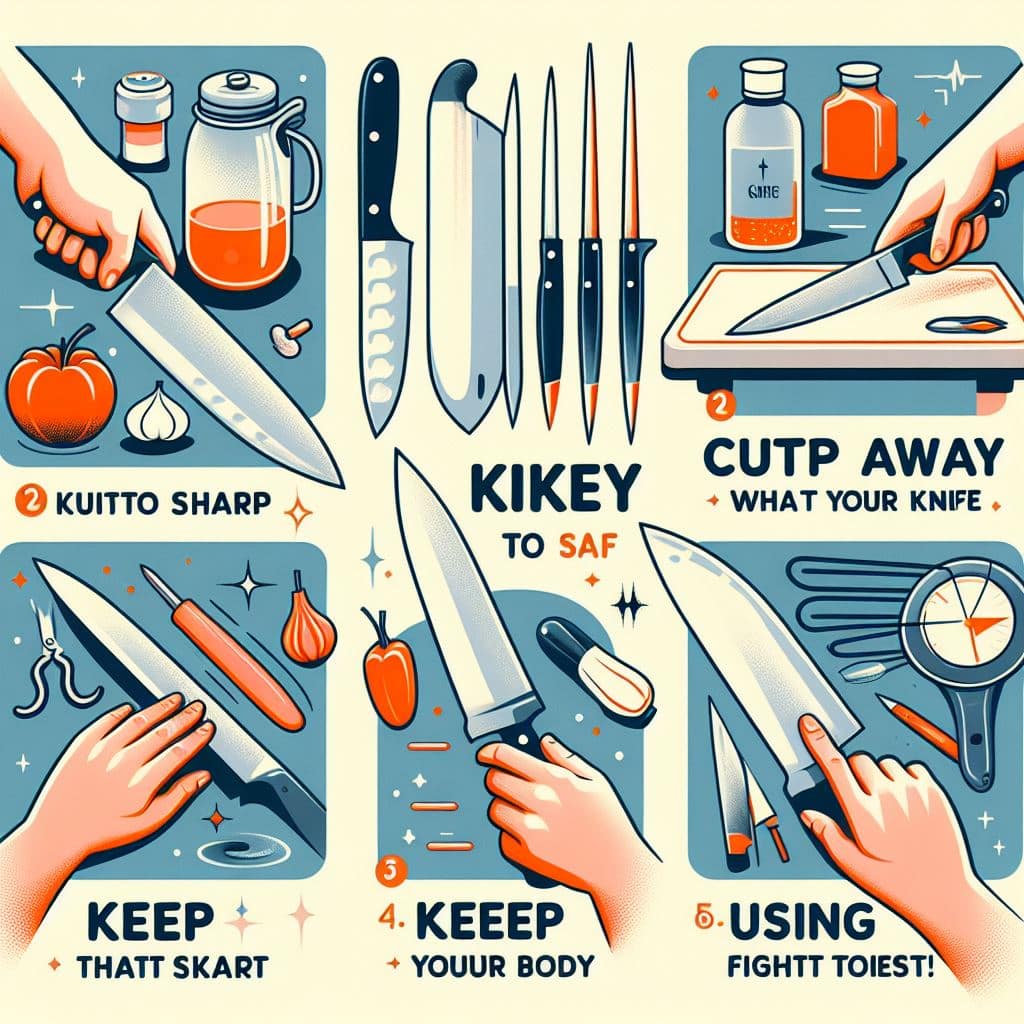
Conclusion
To ensure a safe and enjoyable experience in the kitchen, following proper knife safety tips is crucial. Remember to always keep your knives sharp, use the correct cutting technique, and invest in a good quality cutting board. Additionally, store your knives properly and keep them out of the reach of children.
By implementing these simple precautions, you can significantly reduce the risk of accidents and injuries. Happy and safe cooking!
Frequently Asked Questions For Kitchen Knife Safety Tips
What Are 8 Rules For Knife Safety?
To ensure knife safety, follow these 8 rules: 1. Always keep knives sharp and in good condition. 2. Use a cutting board to avoid accidents. 3. Keep fingers away from the blade while cutting. 4. Store knives in a safe and secure manner.
5. Cut away from your body and never try catching a falling knife. 6. Avoid distractions while using a knife. 7. Clean knives carefully to prevent accidents. 8. Teach children knife safety and supervise their use.
What Are The 6 Steps To Knife Safety?
To ensure knife safety, follow these six steps: 1. Keep knives sharp, as dull blades can slip and cause accidents. 2. Always cut away from your body to avoid injuries. 3. Use a stable cutting surface to prevent the knife from slipping.
4. Keep your fingers away from the blade while holding and cutting. 5. Store knives in a safe place, such as a knife block or sheath. 6. Clean and dry knives properly to prevent rust and accidents.
What Are Some 3 Do’s And 3 Don Ts With Dealing With Knife Handling?
Do’s: 1. Always hold the knife with a firm grip to prevent accidents. 2. Keep your fingers clear of the blade while cutting to avoid injuries. 3. Use a cutting board or sturdy surface to stabilize the knife for precise cuts.
Don’ts: 1. Avoid using a dull knife as it can slip and cause accidents. 2. Never try to catch a falling knife, instead step back and let it fall to avoid injury. 3. Do not leave knives unattended or within reach of children to prevent accidents.
What Is The First Rule Of Knife Safety?
The first rule of knife safety is to always handle a knife with caution and respect. Always keep your fingers away from the blade and never use a knife in a reckless or careless manner. Always use a cutting board and make sure the knife is clean and sharp.

